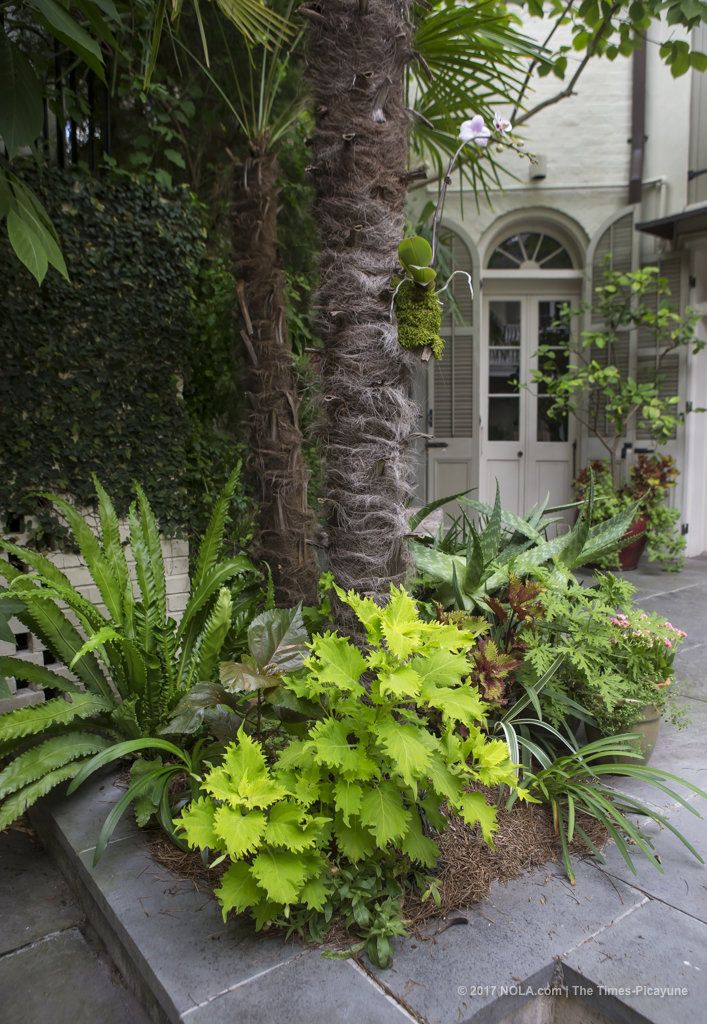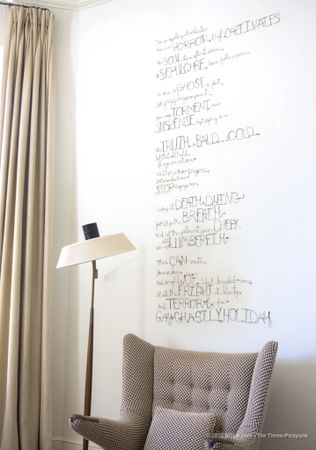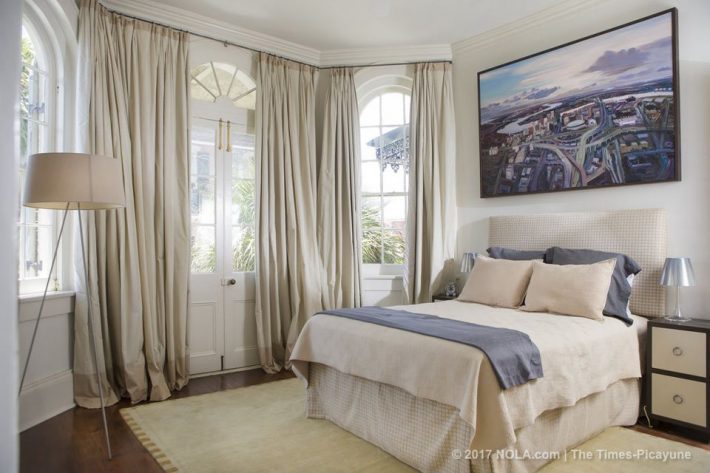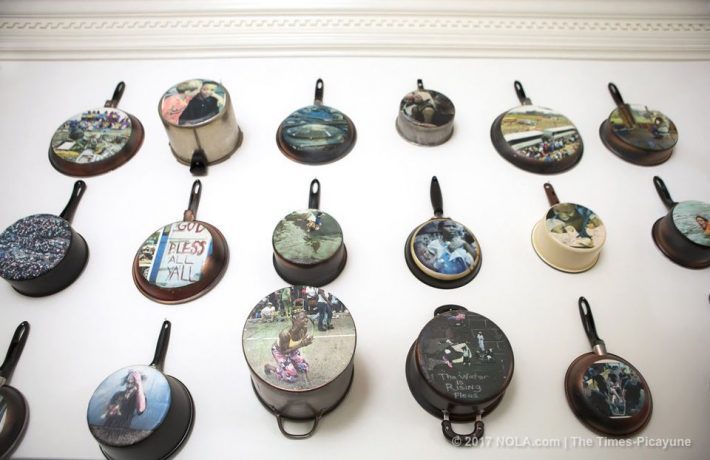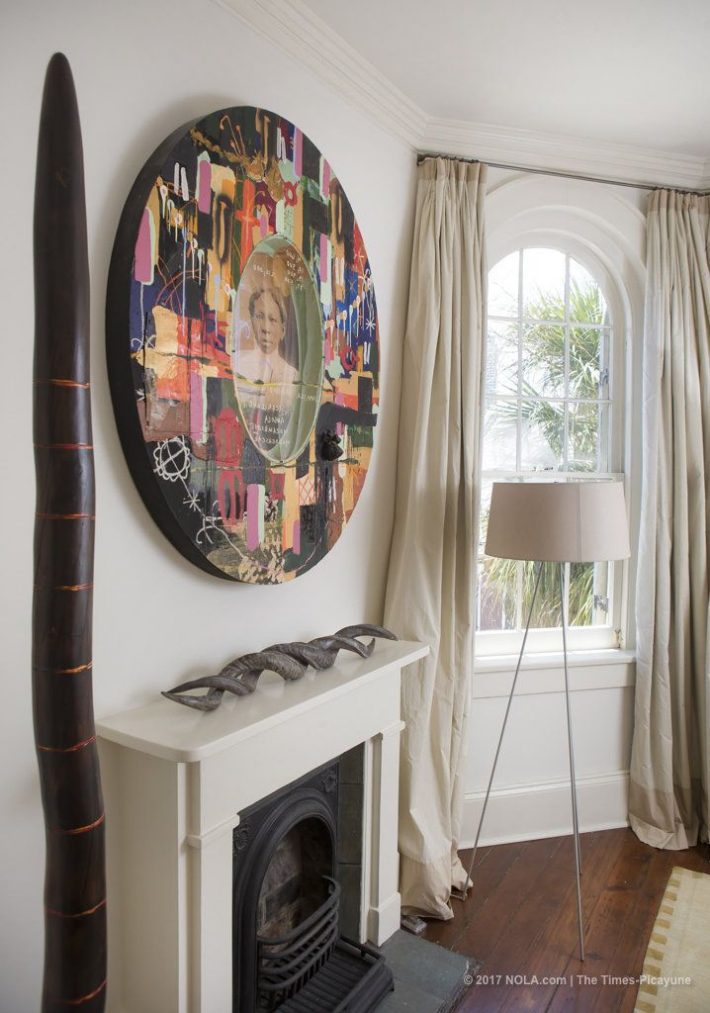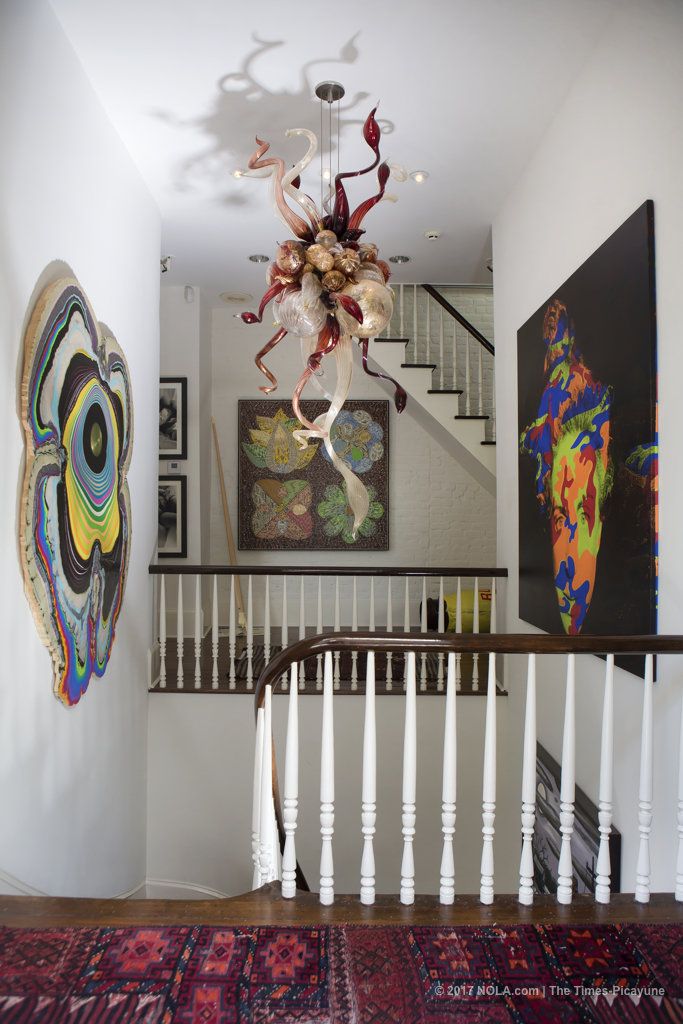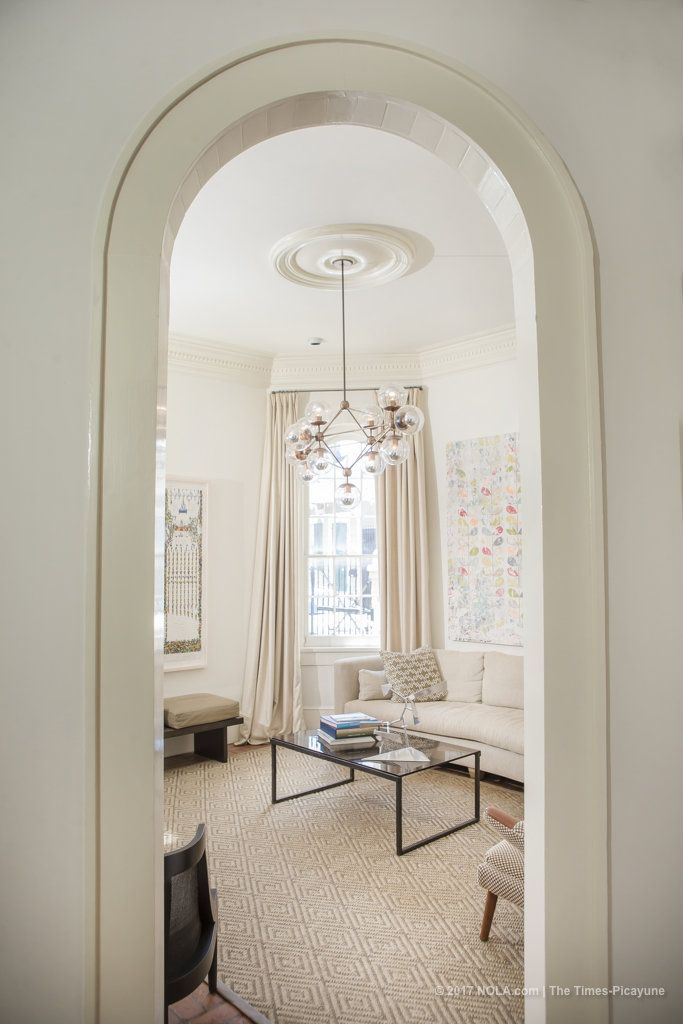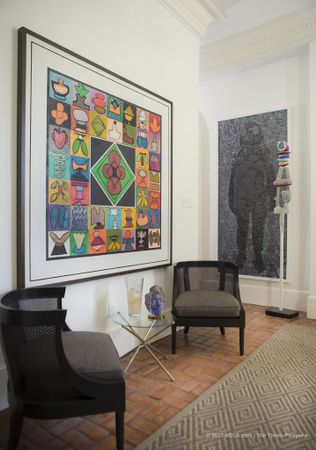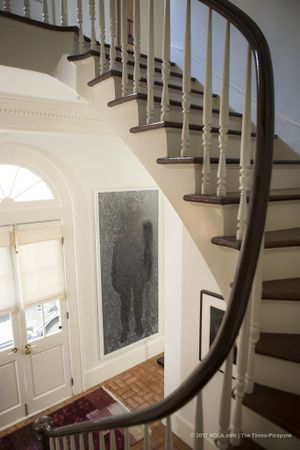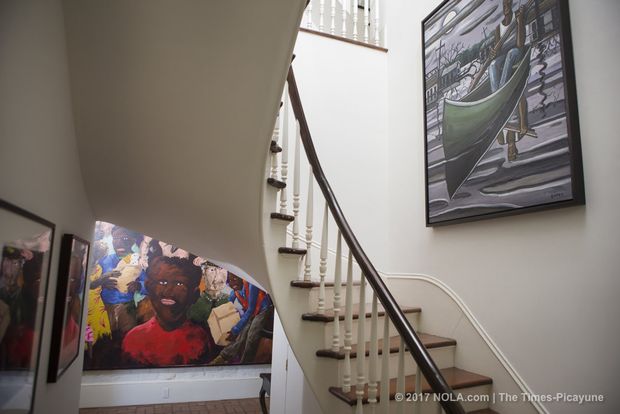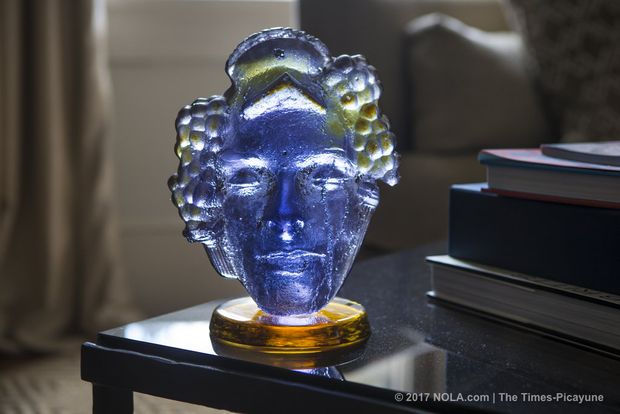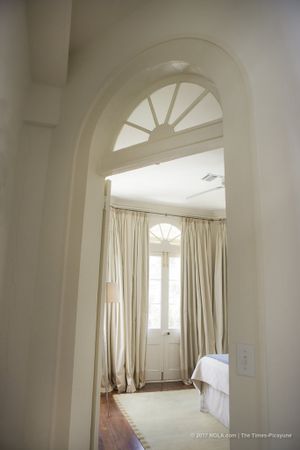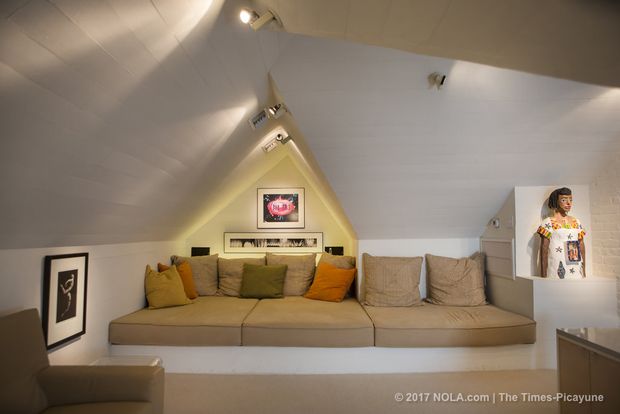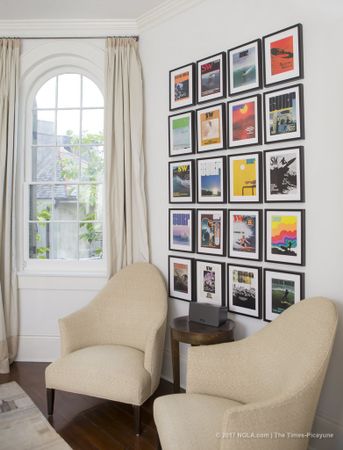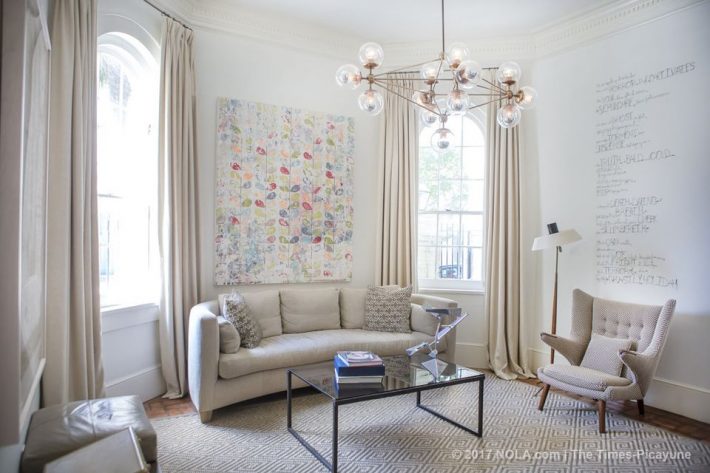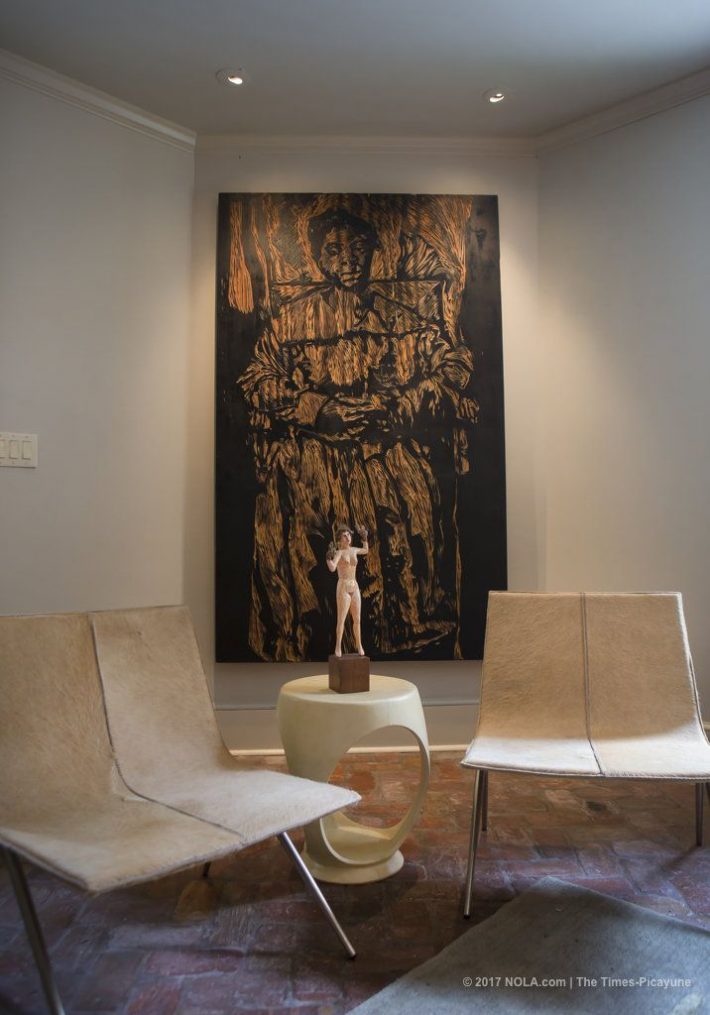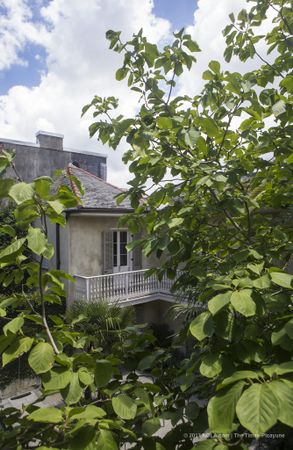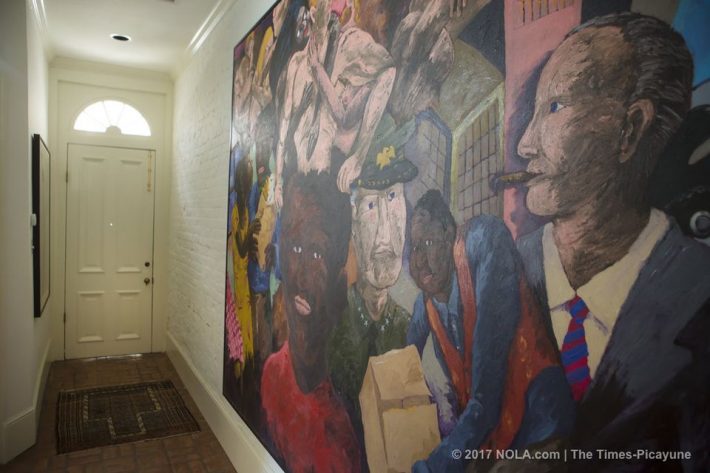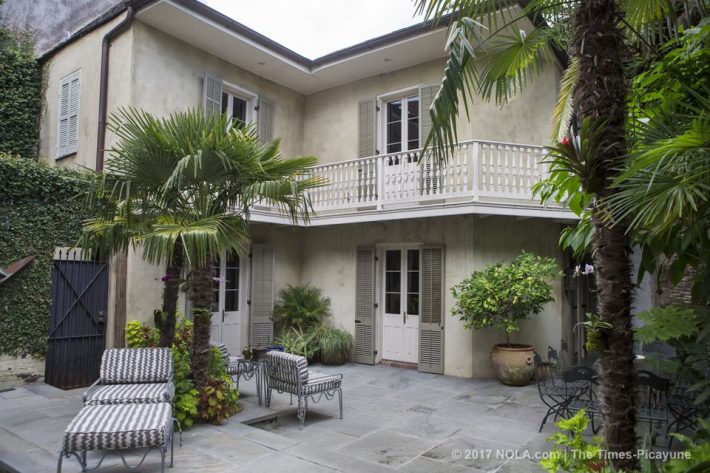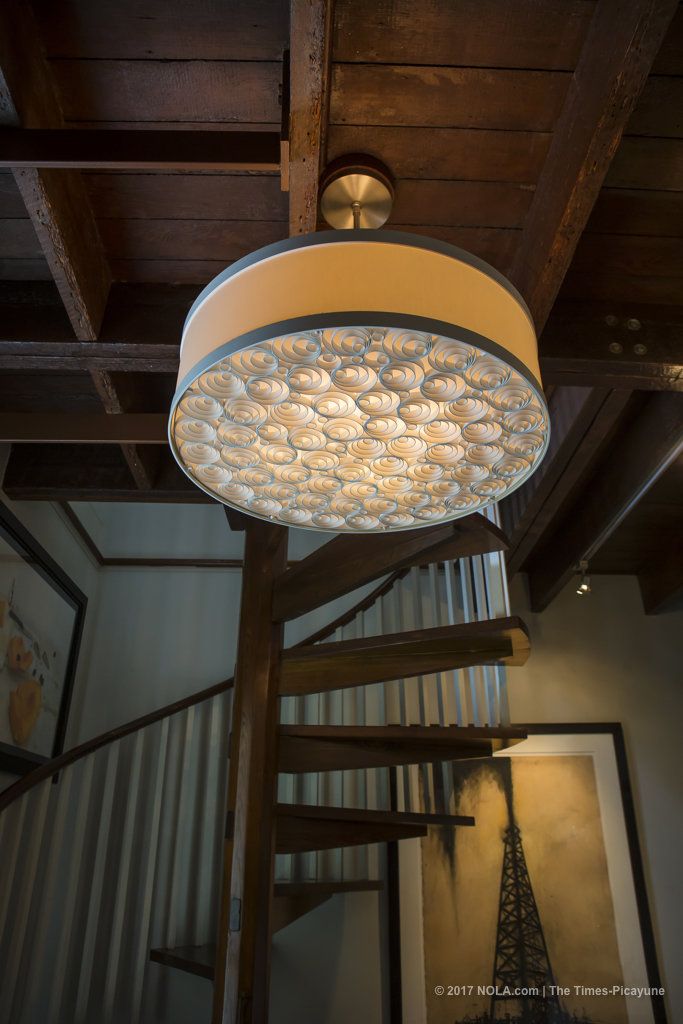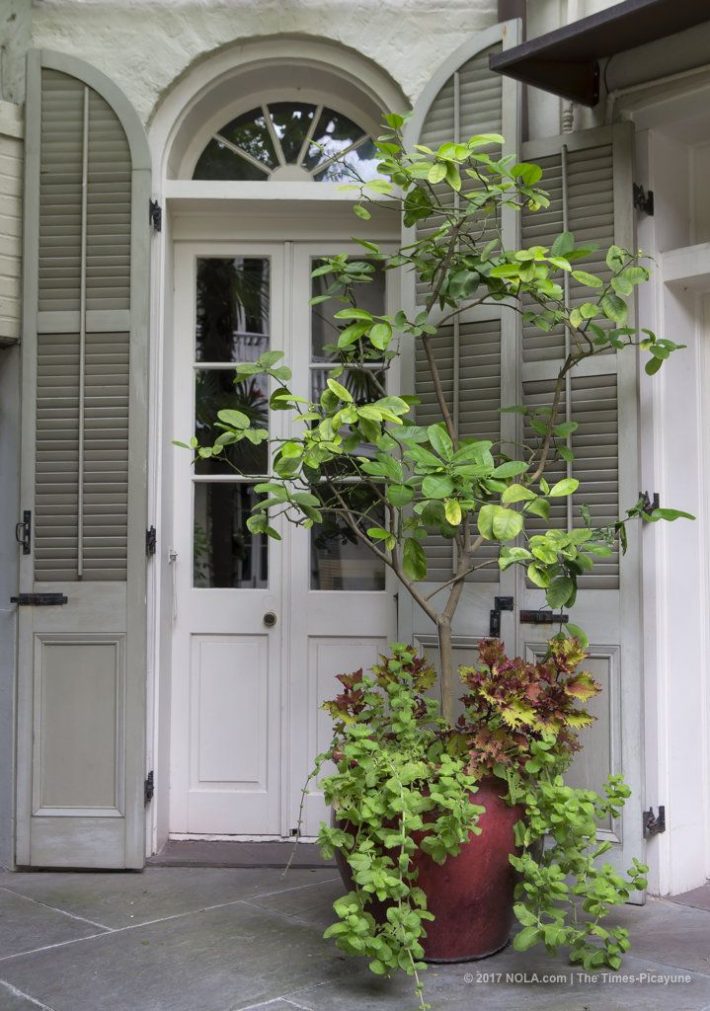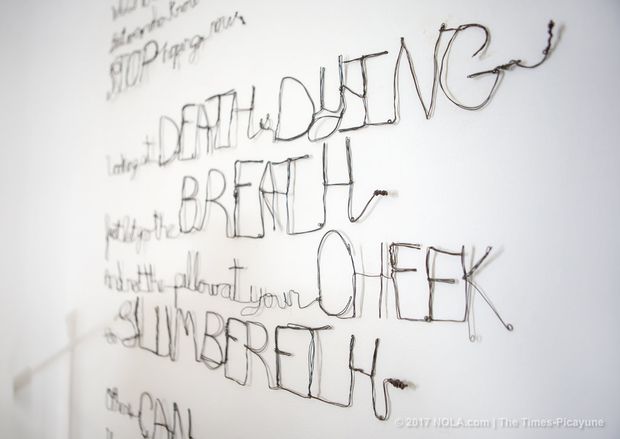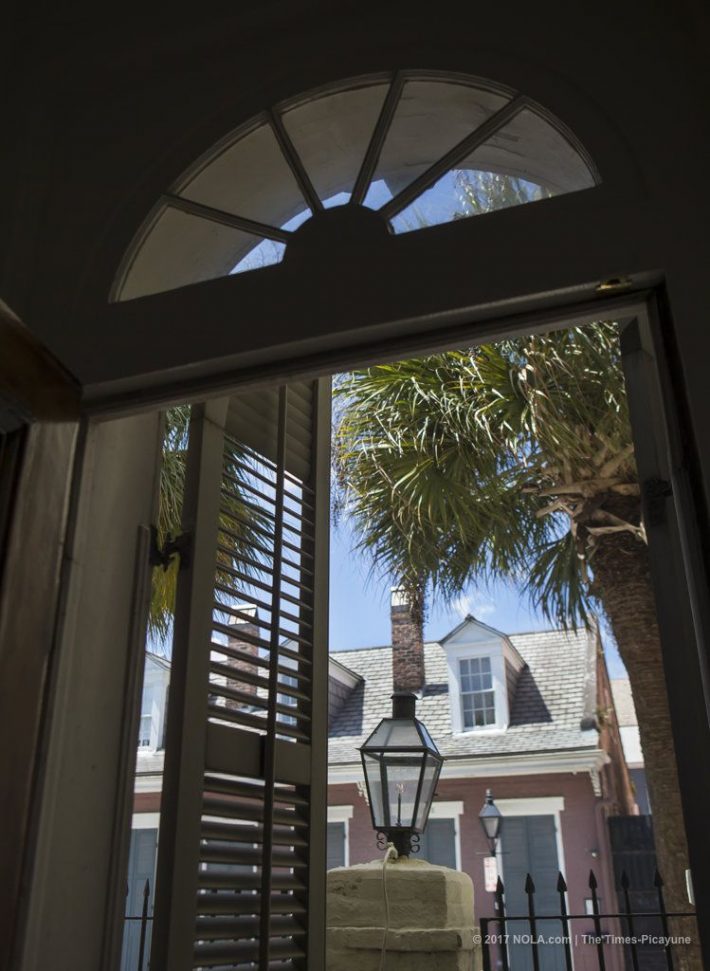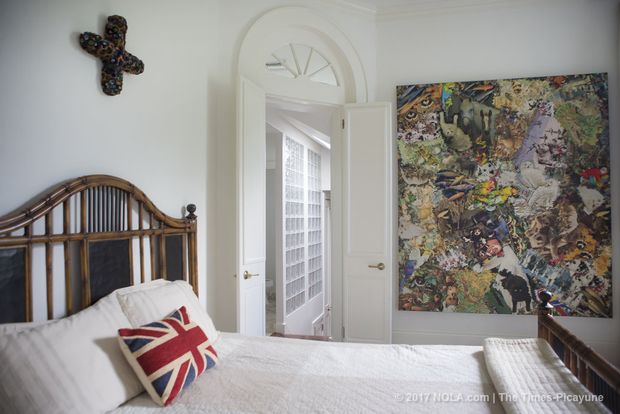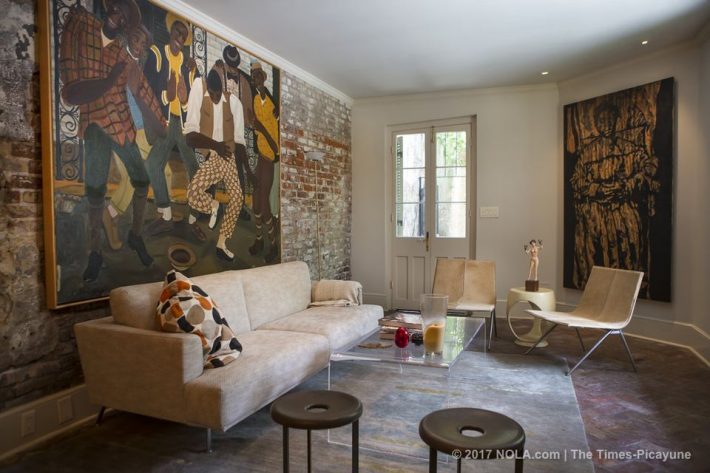By Susan Langenhennig, via nola.com
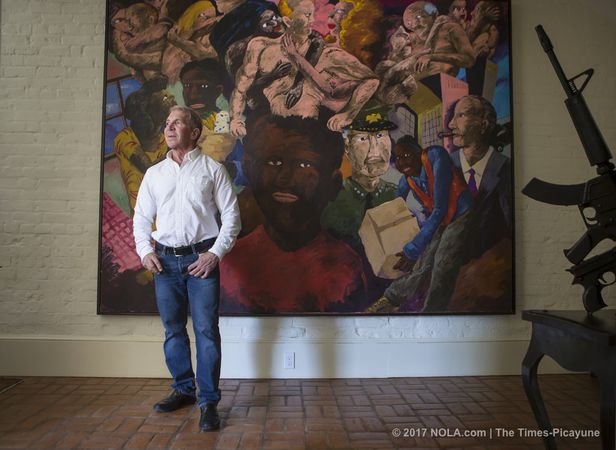
Over his 40 years as a gallery owner, contemporary art dealer Arthur Roger has helped hundreds of clients build corporate and personal collections. When pondering where to hang a new acquisition, Roger often says, “It’s about art having a conversation with art.”
Put two pieces by different artists in the same room, and watch the interplay. “You’ll see something together that you wouldn’t have seen if (the works) were independent of each other.”
In his own house, Roger’s personal collection is engaged in a lively chat. In the living room, a primary-colored Ida Kohlmeyer hangs opposite from a palimpsest-like painting by Nicole Charbonnet. A poem by Emily Dickinson — rendered as a cursive wire wall sculpture by artist Lesley Dill — faces “Parade Formations,” an intricate drawing by artist Dapper Bruce Lafitte.
Though the works are strikingly different, their lines and grid-like structures create an echo.
“This house couldn’t be more of a challenge,” Roger said of arranging art in his gracefully appointed 1860s Victorian home in the French Quarter. Nearly every room is an octagon or a connecting passageway. “You hang something on one wall, and then you feel like you must hang something on another wall. It’s like a Rubik’s Cube.”
And now that he’s finally got the puzzle solved, it’s about to be scrambled again.
On June 1, Roger’s personal collection of paintings, sculptures, drawings, photographs and mixed media pieces will be taken off his walls, packed away and carted over to the New Orleans Museum of Art. He recently donated more than 80 pieces to the museum, including works by national and regional artists such as Luis Cruz Azaceta, Willie Birch, Douglas Bourgeois, Robert Colescott, George Dureau, Robert Gordy, Deborah Kass, Catherine Opie, Robert Polidori, Holton Rower and John Waters, among others.
The collection will go on display at the museum June 23-Sept. 3 in the exhibit “Pride of Place: The Making of Contemporary Art in New Orleans.”
Before it leaves his house, though, the public will get a final chance to see it in situ when Roger’s home will be featured this Sunday, from 2 to 6 p.m., on the Friends of the Cabildo’s Spring Home & Courtyard Tour. The tour begins at the 1850 House Museum Store, 523 St. Ann St.
When asked what prompted the donation to NOMA, Roger turned to humor. The Arthur Roger Gallery is about to mark its 40th anniversary. “I just didn’t want to hold another party,” he said with a small grin.
Turning to a more serious note, one of his goals, he said, was to help the museum expand its contemporary holdings. Most of the pieces are by artists that Roger has tirelessly championed over the years.
And then there was a more personal reason: “I absolutely didn’t want it to be: the collection goes when I die,” Roger said. “I don’t even like to think like that.
“It’s fun and an honor to live with these pieces,” he said, “but they’re not mine.”
Not his? Doesn’t he own these paintings and sculptures?
Yes, but possession can be a relative concept, he contends.
“Artwork is like houses,” Roger said. “We have the ability to live with them and love them, but they will go on after us. It’s like when I walk down the stairs in this house and think how many people have walked down these stairs.”
From the start
Roger opened his first gallery, at 3005 Magazine St., in 1978. His mother mortgaged her Chalmette house to help him get it off the ground. “I wish I could say I deserved it,” he said. “But it made me realize that I was at the point where you either do it or you never recover.”
It was a tough time for contemporary art in New Orleans, Roger continued. “There was a mentality that art was Audubon prints and hunt scenes. (Representing contemporary artists), I’d get shot down. People would say things like: ‘My child could have done that,’ and ‘Is it upside down?’
“But I’ve always felt so confident about the artists, and the work they’re doing,” he said.
Early on, he began representing some of the city’s most prominent contemporary artists, including Robert Gordy and Ida Kohlmeyer. And in 1988, he moved the gallery into its current 5,100-square-foot space on Julia Street, cementing his reputation as the city’s preeminent contemporary art dealer.
As the gallery’s star was rising, Roger also was building his personal art collection, often by taking home pieces that didn’t sell in the gallery. “There’s a resistance to new ideas, and that’s what artists are all about,” he said. “It helped me to hone my own approach to collecting.”
Eventually artwork would fill nearly every wall in his house.
Artist Whitfield Lovell’s found-wood sculpture, for example, sets the tone in the dining room. A ghostly image of a freed slave woman stands proud in the center of the massive piece. Lovell used charcoals to create the image, but the face appears to be burned into the wood. Incorporated into the piece are a decanter of bourbon and some glasses. “I fill them when we have people over,” Roger said.
Across the room hangs an assembly of cooking pots and pans. Artist Luis Cruz Azaceta salvaged the pots from trash piles after Hurricane Katrina. He then topped them with news photographs of the storm and the post-hurricane disaster. The piece is called “Bottom of the Pot.”
“I feel like collecting is organic,” Roger said. “It can be incredibly personal.”
A new chapter
In 2016, Roger launched a renovation of his home with architect and interior designer John Chrestia of the firm Chrestia Staub Pierce. The only octagonal-shaped Victorian house in the French Quarter, the residence was built by a French doctor who moved to New Orleans to care for yellow fever victims.
Roger bought the house in the 1990s from writer Michael Lewis (author of “Moneyball: The Art of Winning an Unfair Game” and “The Blind Side: Evolution of a Game,” among other books).
The main house — there’s also a garconniere and a smaller cottage on the property — is comprised of a stunning series of arched doorways and sharp-angled spaces. The goal of renovation, Chrestia said, was to change colors, “edit a bit to open it up,” upgrade fabrics and fixtures and “take Arthur in the tasteful, neutral-ish direction he needed with or without the art.”
During the renovation, Roger moved out of the house and took all of the artwork off the walls so it wouldn’t be damaged during the construction. One-third went to the museum then. When he moved back into the home last summer, the walls were briefly bare.
“When I saw the house empty, I immediately wanted to get things back up,” he said, smiling. “I got a little taste of what it will feel like (when the rest of the pieces go to NOMA.)”
See more photos of this house and others at www.nola.com/homegarden and on Instagram at @nolahomegarden.
